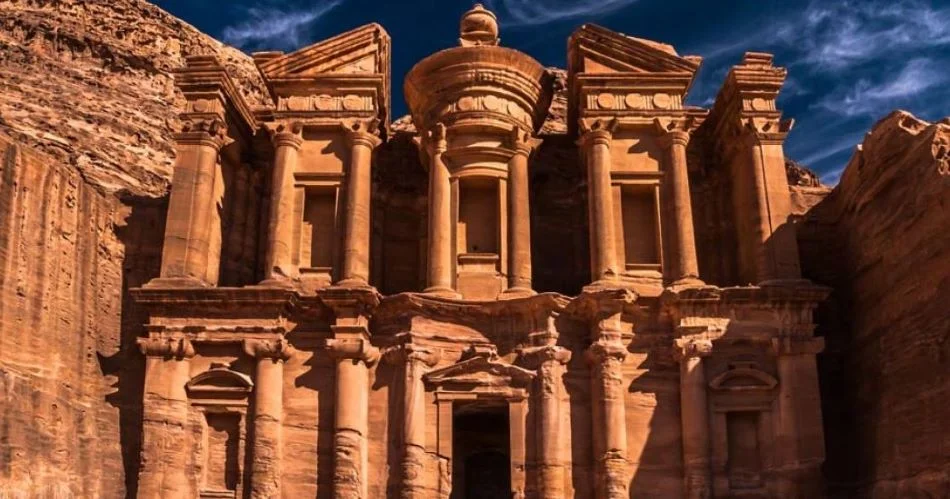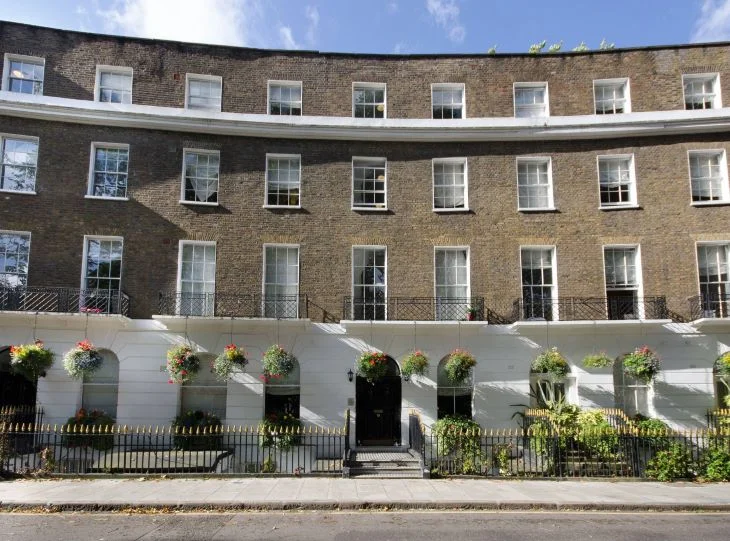Petra Jordan: 5 Incredible Facts About the Rose City of Wonder That Will Inspire You
Petra Jordan a city sculpted into vivid pink sandstone cliffs and teeming with ancient secrets, is a site right out of a storybook. One of the world’s most recognizable sites, this archaeological marvel is tucked away in the desert. Known as the “Rose City,” Petra is a reminder of the Nabataeans’ inventiveness in converting this untamed area into a bustling center more than 2,000 years ago. Every area of Petra is like traveling back in time, from the magnificent Treasury to the elaborate tombs and secret passageways. It’s a voyage into the depths of mystery, beauty, and history rather than merely a destination.
Petra, Jordan: A Journey Through Time and Stone
1. The Timeless Allure of Petra Jorden
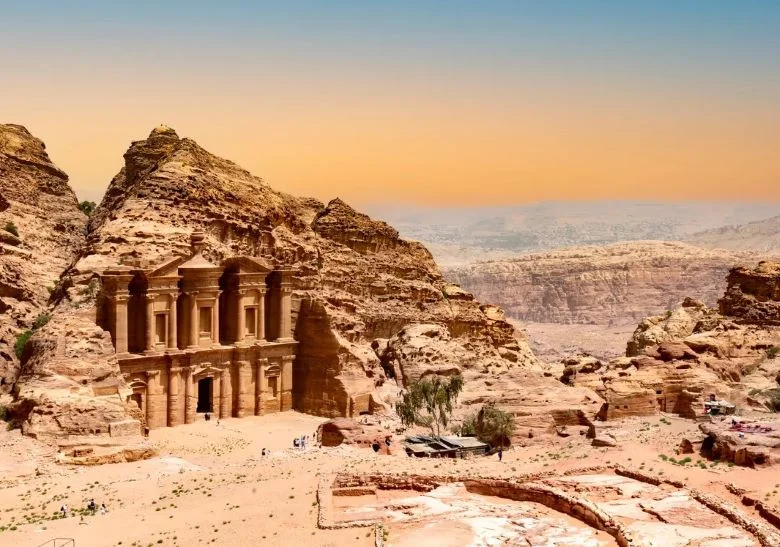
More than just an old city, Petra Jordan is a historical and architectural wonder. This UNESCO World Heritage Site, tucked away in the middle of a rocky desert, has long captivated tourists, academics, and archaeologists. Its colossal façade and rose-colored rock formations inspire an almost unearthly feeling of amazement.
Around the sixth century BCE, the ancient Arab culture known as the Nabataeans developed Petra Jordan into a thriving commercial center. Petra Jordan stands itself as a wonder of human ingenuity because to their inventive techniques for sculpting intricate structures into solid sandstone cliffs. This was more than just a metropolis; it was a confluence of cultures where ideas, silks, and spices were freely exchanged along historic trade routes.
Today, Petra Jordan is celebrated as one of the New Seven Wonders of the World. Its captivating beauty is enhanced by the interplay of natural light on the sandstone, which changes colors throughout the day. Visitors often describe Petra as a living painting, where every hour casts a new glow on its timeless facade.
2. Entering Petra: The Siq
The Siq, a striking, slender canyon that acts as the city’s natural entrance, is where the trip inside Petra Jordan starts. This 1.2-kilometer trail meanders amid tall sandstone cliffs that range in color from dusty pink to rich orange. It’s like entering a different realm when you walk through the Siq, where history and nature coexist harmoniously.
Remains of old engravings and water channels adorn the Siq’s walls, demonstrating the Nabataeans‘ mastery of engineering. In the past, these waterways brought water into the center of the city, supporting both locals and tourists. The suspense increases with each step as you negotiate the Siq’s many turns.
Then, in what many say is an incredible experience, the Treasury is revealed as the canyon opens up. Al-Khazneh is a famous building that stands tall and proud, its elaborate carvings glistening in the sunlight. One of Petra Jordan most spectacular scenes is the change from the fenced-in Siq to the magnificence of the Treasury.
3. The Treasury: Petra’s Crown Jewel
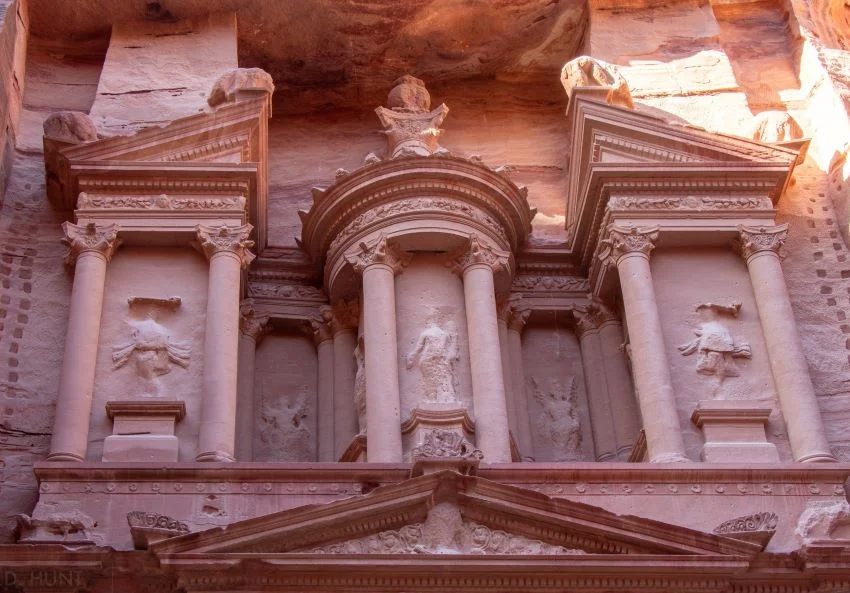
For good reason, Petra Jordan most well-known monument is the Treasury, also known as Al-Khazneh. With its magnificent front of Corinthian columns, statues, and elaborate decorations, it is nearly 40 meters tall and carved straight into the sandstone rock. Despite its name, the Treasury’s function is still unknown, though it is thought to have been a royal shrine or tomb.
The Treasury’s current moniker comes from a legend that it formerly harbored buried riches. The city’s cultural fusion is demonstrated by the details on its front, which combine classical Hellenistic influences with Nabataean creativity. Visitors are in awe at the carving’s accuracy and size, asking how it was accomplished more than two thousand years ago.
The Treasury is surrounded by a sense of awe and mystery. Al-Khazneh captivates the mind more than any other building in the city, whether it is seen in the gentle morning light or lit by candles during Petra Jordan nocturnal tours. Visitors are left with a lasting impression of the setting.
4. Exploring Petra’s Lesser-Known Gems
Although the Treasury frequently takes center stage, Petra is a vast city with a wealth of undiscovered gems just waiting to be found. For instance, the Royal Tombs are a group of opulent graveyards set deep into the cliffs that provide insight into the Nabataean people’s respect for the afterlife.
Another architectural wonder at the top of a strenuous climb is the Monastery, also known as Ad-Deir. Its enormous front is calm and majestic, and it is larger than the Treasury. The journey is well worth the effort because tourists are rewarded with expansive vistas of Petra Jorden untamed environment from its vantage point.
Petra Jordan historic streets, colonnaded avenues, and theater show its once-thriving urban life to visitors who travel deeper. Away from the crowds, exploring these more sedate areas provides a closer connection to the city’s past. In Petra, each path has a backstory that satisfies curiosity via exploration.
5. The Ingenious Legacy of the Nabataeans
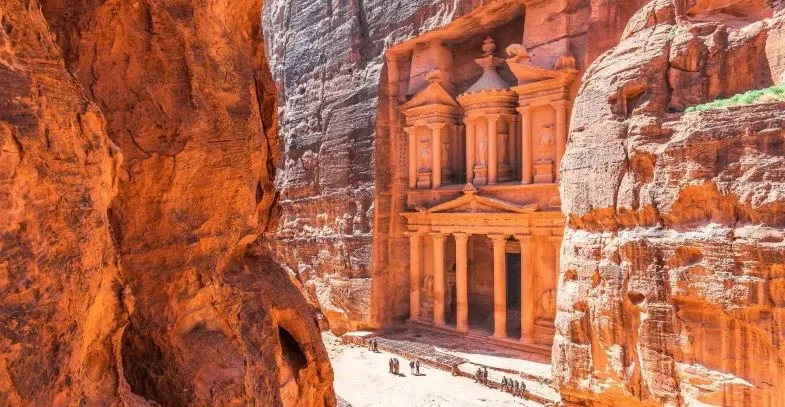
One of the most amazing things about Petra is the engineering genius of the Nabataeans. They used creative water management techniques to turn this parched desert into a bustling metropolis. Water was diverted and stored via cisterns, dams, and aqueducts, guaranteeing a steady supply for both locals and traders.
Petra’s design was strategic as well as useful. The city was naturally protected against invaders because it was tucked away in a valley with cliffs all around it. Petra was an important economic center because of the Nabataeans’ ability to manage and profit from trade due to its strategic location along trade routes.
Additionally, the Nabataeans showed a strong bond with their surroundings. They built structures that have endured erosion and time by sculpting their city into the rocks. They left a legacy of tenacity and inventiveness by ensuring Petra’s status as a gem of the ancient world via their capacity for adaptation and innovation.

